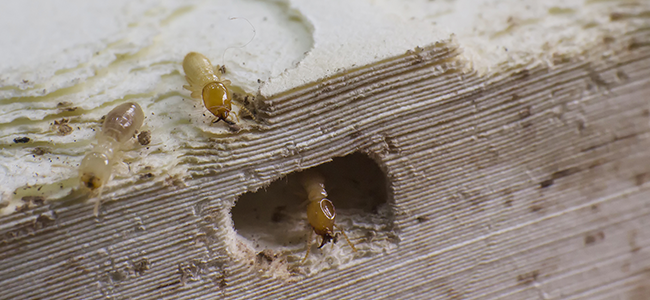
The Best Way To Protect Your Washington D.C. Property From Termites
10/20/2021
What's yellow and white and orange all over? None other than these sneaky insects with a penchant for wooden objects! ...
READ MORE >
04/09/2021
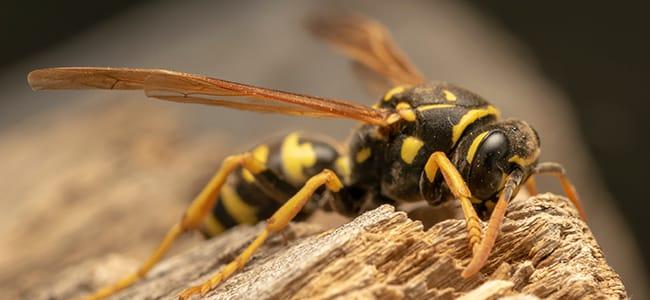
Most people would agree that when you’re spending time outdoors, you’d rather not have to deal with a bunch of stinging insects. Even if they are not being overly aggressive, one wrong move could leave you running for cover to avoid their sudden wrath and painful stings.
Keeping your yard a safe and pleasant place to spend time, free of wasps and hornets, doesn’t just happen by itself. It takes thought and action to make your Maryland yard less appealing to wasps and hornets, but trust us when we say that taking the time now to minimize the number of stinging insects on your property later is well worth the effort.
When it comes to stinging insects, there are a lot of different species buzzing around. There is also often some confusion about the different kinds of stinging insects because they are all so similar in so many ways. Hornets are actually a type of wasp. Bees are different from wasps, and in some places, honey bees are protected by law.
To clear up any confusion, below is some information about four of the most common types of wasps and hornets in Maryland.
Bald-Faced Hornets
Bald-faced hornets are black and white wasps that get their name because the majority of their body is black while the majority of their head is white. They have six legs, a set of antennae that point downward in front of their face, and two sets of wings with one being quite a bit larger than the other. Their bodies are segmented into three sections: The head, the thorax, and the abdomen. Their abdomens come to a point at the end where their stingers are housed. Bald-faced hornets grow to be slightly smaller than the width of a dime, although the queens grow a bit larger.
Bald-faced hornets build their nests suspended above the ground. These usually hang from trees, buildings, shrubs, or other areas where they can be at least three feet off the ground. Their nests are papery, gray, and are typically shaped like an upside-down teardrop. These nests can grow to be quite large, often growing to around 14 inches in diameter and 24 inches in length. For comparison, a basketball is only nine and a half inches in diameter. Anywhere from 100 to 400 bald-faced hornets might live in one colony.
Bald-faced hornets like sugary foods and often drink liquids, such as juices or nectars. However, they will also eat insects and other meats.
Eastern Cicada Killers
Eastern cicada killers have a bit of a scary name, and when combined with their large size, it’s easy to understand why someone might feel threatened when coming across one. However, these wasps are probably the most docile of the bunch. Eastern cicada killers can grow up to one and a half inches long. Their abdomens are black with pale yellow bands, while their heads and thorax are more of a brown color. Like other wasps, they have six legs, a pair of antennae, and two sets of wings.
Eastern cicada killers are not social wasps. Unlike bald-faced hornets, they do not live in a large group together, but instead build their own individual burrows in the ground where the females take care of their young. However, oftentimes several Eastern cicada killer nests can be found near each other simply due to the suitable nesting location.
Adult Eastern cicada killers eat nectar, sap, and plants. They get their name because they paralyze cicadas, carry them back to their nests, and lay eggs under their second leg. Once the egg hatches, the larvae will feed on the still-alive cicada. In less than four days, the larvae can eat an entire cicada. At that point, it will build a cocoon where it will become an adult.
European Paper Wasps
European paper wasps get their name from the paper-like nests they build. These nests are made from a similar material to the nests that bald-faced hornets build, but are much smaller, growing to around eight inches in diameter at the most. They also differ from bald-faced hornets' nests in that they have open, exposed cells that aren’t covered by other material. These nests are often built in the eaves of roofs or hanging from trees.
European paper wasps are about ¾ of an inch in length. They are brown with some yellow markings on them. Like other wasps, they have six legs, two antennae, and two sets of wings.
Paper wasps eat nectar and insects. They are semi-social, which means that they live in small colonies, but they don’t have a worker caste in the colony.
Yellow Jackets
Yellow jackets have the black and yellow pattern you typically think of when you think about wasps or bees. They are usually around half an inch long, with six legs, two antennae, and two sets of wings.
Yellow jackets are social insects that live in very large colonies. There can be up to 4000 yellow jackets in just one colony. They can build their nests both above ground, often in the eaves of buildings, or in the ground. If they build their nest in the ground, it can be challenging difficult to find. If you look closely, you can see multiple holes that mark its location.
Yellow jackets like sweet foods, such as nectar and juice, and they also eat proteins from insects and meats. Because of their varied tastes, they are often present when you eat outdoors. Yellow jackets are the most aggressive of the wasps common to Maryland.
Although each type of wasp described above has its own unique characteristics, they all have commonalities as well. The one major thing they have in common is the ability to sting. Unlike bees that can only sting once, wasps can sting multiple times.
For most people, getting stung by a wasp is an unpleasant experience, but one that, with a little time, will heal just fine. However, multiple stings can cause more severe reactions, even in people who are typically not bothered by wasp stings.
The major danger associated with wasps is for the people who are allergic to their stings. Anaphylactic reactions are not an uncommon reaction to a wasp sting. A person with a bee sting allergy can experience anaphylaxis after just one sting, and given a wasp's ability to sting multiple times, this can be troublesome. If not quickly treated, anaphylaxis can result in death.
Whether you have a wasp allergy or not, you probably want to avoid the pain and danger of a wasp sting. The best way to do this is not to hide inside your Maryland house or try to get rid of the wasps after they’ve built their nest on your property. The best way to avoid wasps is to prevent them from nesting on your property in the first place.
By preventing wasps from nesting on your property, you are far less likely to encounter them while spending time outdoors, and thus, far less likely to get stung. Although you may still see a wasp here and there as it buzzes around, wasps will typically stick fairly close to where they live.
To prevent wasps from nesting in your Maryland yard, you have to understand what attracts them to your yard in the first place. Then by eliminating or reducing as many of these factors as possible, you can lessen the chance of wasps choosing your property to build their nests.
Wasps look for a few different things each spring when choosing a place to nest. If you don’t have these things in your yard, or if they are in very short supply, the wasps may decide to go elsewhere for their nest building.
Food Sources
Like any animal, wasps need to eat. If they can’t find an adequate food supply on your property, they won’t want to hang around. Wasps typically like sweets and proteins. You can eliminate these food sources by:
Minimizing the number of flowering plants directly around your house.
Cleaning up really well after eating outdoors.
Picking up fruit after it falls from trees.
Keeping trash bins tightly closed.
Eliminating as many other pests from your yard as possible.
Avoiding bright colors and sweet scents when you’re outdoors.
Water Sources
Wasps also need water to survive. Eliminating excess moisture and water around your property will help prevent them from nesting on your property. Do this by:
Making sure outdoor spigots aren’t leaking or drippy.
Cleaning out gutters.
Ensuring proper drainage that diverts water away from your house.
Cutting back foliage so the sun can reach areas that might otherwise retain moisture.
Eliminating areas where water can pool, such as plant pots, overturned toys, and low spots on your lawn.
Nesting Sites
Of the three things that wasps look for when they are choosing an area to nest, this one is the most difficult to eliminate. The eaves of your home is a favorite spot for many wasps, as are trees and underground. None of these areas can be fully eliminated from your property. However, you can cut back excess foliage, which may help.
Your best bet in trying to avoid wasps building nests on your property is to pay careful attention in the spring. Frequently check the areas where wasps are most likely to build nests. This way, you are more likely to find a nest in its earliest stages of being built, when the queen and maybe a few other wasps are the only ones around. The longer you wait, the more likely it is that the colony will be larger and more wasps will be hanging around protecting the nest.
Despite your best efforts to make your yard less appealing to wasps and hornets, it's entirely possible to still end up with a problem in your Maryland yard. If this is the case, you don’t want to try to take care of it on your own. Although each wasp species has a different level of aggression, all wasps become aggressive when trying to protect their nests. If you try to get rid of it on your own, you risk being stung repeatedly.
Instead, the best course of action is to contact American Pest. We have the experience and equipment necessary to eliminate wasp and hornet problems safely and effectively. We take the time to identify the type of wasp or hornet on your property and determine where they are nesting so that we can get at the source of the problem. By fully treating the nesting area, we make sure to eliminate the entire colony. For all of your stinging insect control needs, contact American Pest today.

10/20/2021
What's yellow and white and orange all over? None other than these sneaky insects with a penchant for wooden objects! ...
READ MORE >
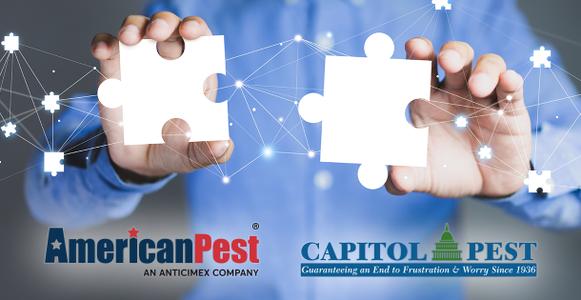
10/01/2021
Fulton, MD, September 30, 2021—American Pest, the leading provider in modern, preventive pest management throughout Maryland, Washington D.C....
READ MORE >
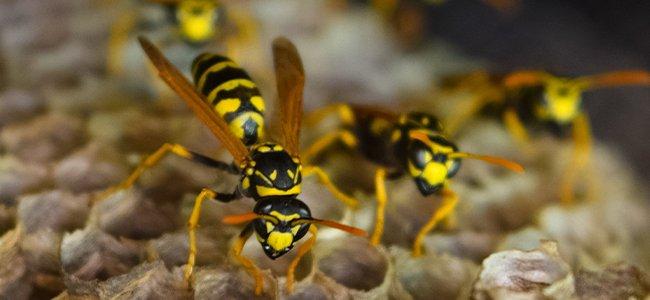
08/23/2021
Stinging insects are extremely dangerous pests here in Washington D.C. For aggressive varieties such as wasps, home and business owners find themse...
READ MORE >
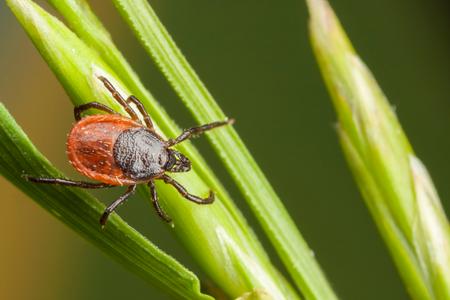
07/15/2021
Each year, tick populations are on the rise. This is due to a multitude of factors, including climate change and increased tick habitat. Frederick ...
READ MORE >

Protect your home and family from nuisance and potentially damaging pests with a Preferred Care home pest control plan. Starting at $49/month

Don't let the bed bugs bite a second longer. Contact American Pest for the most comprehensive bed bug control in the industry. Learn More

Our certified rodent control pros will put an end to your frustration by getting rid of rats and mice inside your home. Learn More

Say goodbye to wood-destroying termites in your home when you contact American Pest for expert termite control. Learn More

Trust American Pest to deliver professional backyard tick control services that are guaranteed to get results. Learn More

Don't spend the warm-weather season indoors, find out how American Pest's professional treatments get rid of mosquitoes. Learn More
Fill out the form and recieve feedback in less than 5 minutes. For immediate service please call.